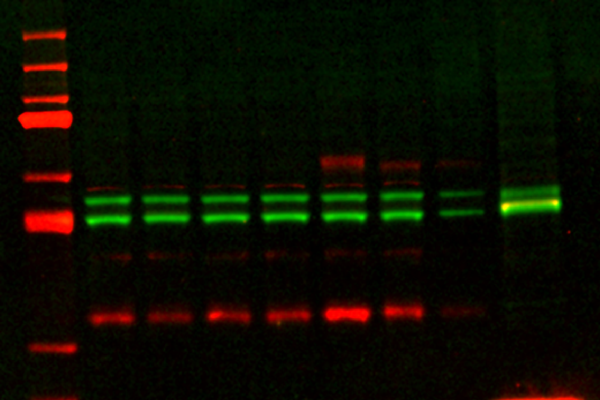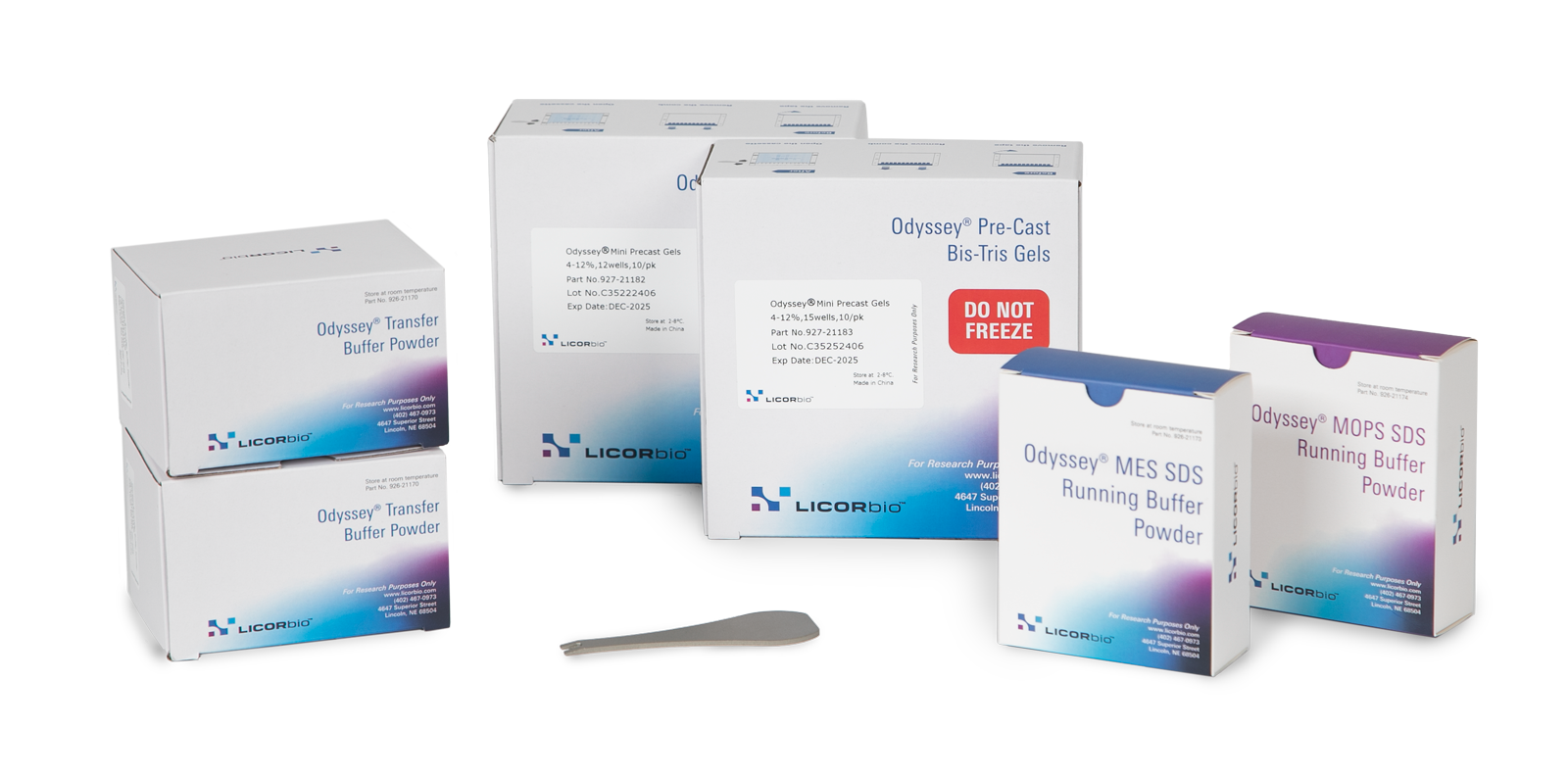Quantitative Western Blots
Is Your Question Quantitative or Qualitative?
It all depends on what you want to do. You can use a qualitative Western blot to identify the presence or absence of a protein of interest. A quantitative Western is used to detect specific proteins and measure relative changes between different conditions.
Just remember – it’s all relative. Quantitative, qualitative, or semi-quantitative: there are no absolute measurements. The key is to maximize accuracy and precision to make relative comparisons as meaningful as possible. How? By reducing variability, whenever possible.
Qualitative: Yes/NoQuantitative: How Much?
“Although originally a qualitative or at best a semi-quantitative method, with the rise of computational systems biology, Western blotting has become increasingly important for fully quantitative applications.”
What is a Quantitative Western Blot?
A quantitative Western blot makes relative comparisons between different treatments possible. The goal of a quantitative Western is to accurately measure changes in protein expression.

Western Blot Uses
- Protein-protein interactions
- Signaling pathways
- Post-translational modifications
- Cell surface proteins
- RNAi analysis
See some published examples of quantitative Western blots
View publications“The development of the immunoblot to detect and characterize a protein with an antisera, even in a crude mixture, was a breakthrough with wide-ranging and unpredictable applications across physiology and medicine.”
Why Do We Need Quantitative Western Blots?
Life-altering therapeutics. Increased crop yields. All of us want to make a difference with our life’s work. Quantitative Westerns can be a powerful tool to advance discovery and make the world a better place.
“With numbers comes great responsibility."
Presenting the Best Blots
Scientific publishers, funding agencies, and biotechnology and pharmaceutical companies are interested in quantitative Western blots. Journal standards for publishing Western blots have become more rigorous in recent years.5, 6, 7, 8, 9 It’s important to understand the theory and technique of Westerns to get accurate protein quantification. With more credible data, we can build a solid foundation for the future.
“Another concern is the current inability of any laboratory to reproduce published western blots since the details published in journals about western blotting are typically minimal.”
Quantitative Western Blot Requirements
- Signals are proportional to the amount of protein loaded.
- Proteins of interest (or “targets”) are quantified within the linear range of detection.
- Internal loading controls correct for unavoidable variability from sample preparation, loading, and transfer.
Along with these requirements, experimental variability should be kept low so that replication is achievable.
For a Western to be quantitative, you must validate several conditions. A difference in band intensity can be caused by experimental variability (like using a different antibody or blocker), or by true biological changes. It’s important to determine the sources of variability in your Western blotting procedure, and how best to control for them, before you even design your experiment.
“…it is key to convincingly validate the integrity of the sample, the specificity of the antibody, and the linearity of the detection system and to assess sample loading.”
“Positive and negative controls, as well as molecular size markers, should be included on each gel and blot—either in the main figure or an expanded data supplementary figure.”
What is Variability?
Your conclusions will always be based on (and tempered by) the amount of variability in your experiment. You might define or measure variability with CV (coefficient of variation), σ (standard deviation), r2 (coefficient of determination), or something else entirely. Reducing variability is the key to maximizing precision.
Determining the significance of experimental results is a common concern for quantitative Westerns. One way is to define the percent change of band signal between treated and untreated samples. The experimental change needs to be greater than your measure of variability, like CV. So, to be more confident of small changes, decrease the CV in your experiment. Easier said than done, right? To get accurate answers consistently, remove sources of error wherever possible.
Reduce variabilityto get robust, replicable data
“The premise of immunoblotting is simple, but execution is tricky, and there are many variations in the method that can affect the outcome. Add quantitation to the end of an immunoblot and the complexity of implementations increases even further.”
Questions to Consider
Think about a typical Western blot. Maybe you’re about to attempt your first one. Maybe you’ve been doing Westerns for years. Regardless of your level of expertise, there are multiple questions to answer before you begin.
- Is your detection chemistry based on chemiluminescent or fluorescent detection?
- What is the dynamic range of your detection system?
- Does the amount of protein you are loading allow for accurate quantitation?
- What normalization strategy works best for your experimental context?
- How will the way you compare and analyze quantified bands affect your results?
- How many technical and biological replicates do you need?
What steps can you take today to improve your Western blot results?
LI-COR provides products, protocols, and support for Western blotting (and a range of other assays) that help reduce variability and increase replicability. Let us know how we can help you.
Get in TouchContinue reading: Using Chemistry to Get Proportional Signals
References
- Degasperi A, Birtwistle MR, Volinsky N, Rauch J, Kolch W, Kholodenko BN (2014) PLoS ONE. 9(1): e87293. DOI: 10.1371/journal.pone.0087293
- McDonough AA, Veiras LC, Minas JN, Ralph DL. (2015) Considerations when quantitating protein abundance by immunoblot. Am J Physiol Cell Physiol. 308:C426-33.
- Janes KA. (2015) An analysis of critical factors for quantitative immunoblotting. Sci Signal. 8(371): rs2.
- Ghosh R, Gilda JE, Gomes AV. (2014) Expert Review of Proteomics. 11(5):549-560. DOI: 10.1586/14789450.2014.939635.
- Image Integrity. Nature. Macmillan Publishers Limited, 2016. Web. 3 March 2016.
- Instructions for Authors. The Journal of Biological Chemistry. American Society for Biochemistry and Molecular Biology. Web. 3 March 2016.
- Cell Press Digital Image Guidelines. Cell. CellPress. Web. 3 March 2016
- Instructions for Authors. The Journal of Cell Biology. The Rockefeller University Press. Web. 3 March 2016.
- Instructions for preparing an initial manuscript. Science. American Association for the Advancement of Science. Web. 3 March 2016.
